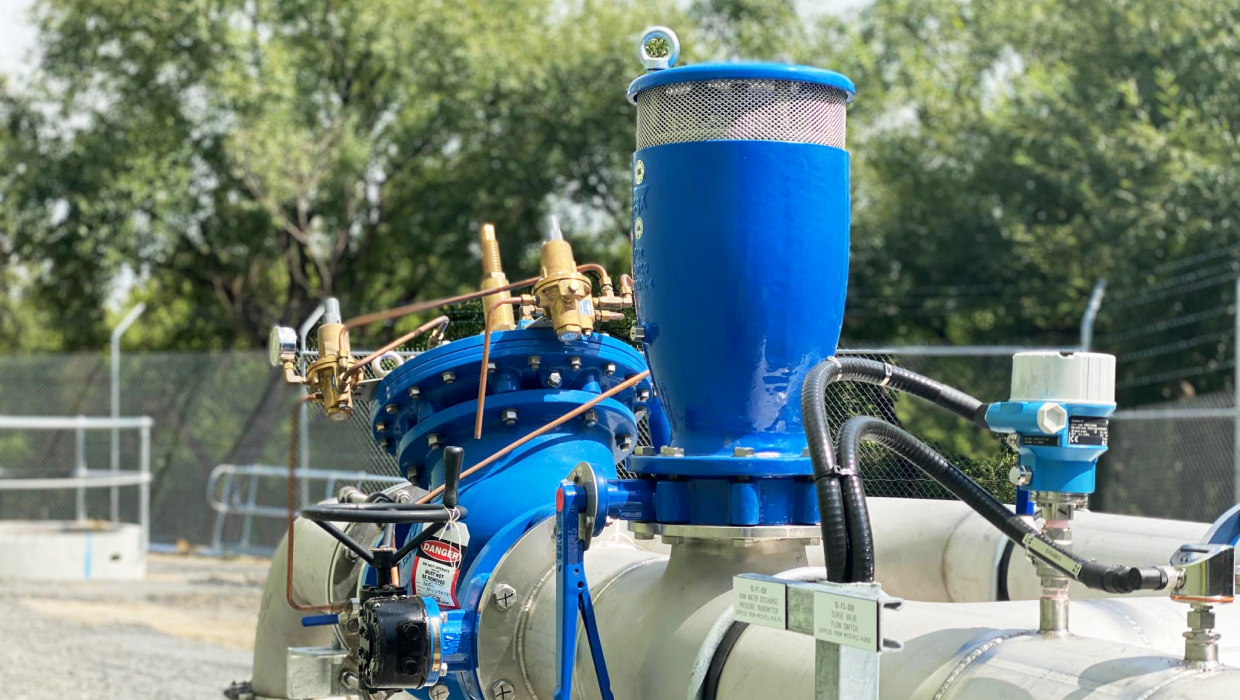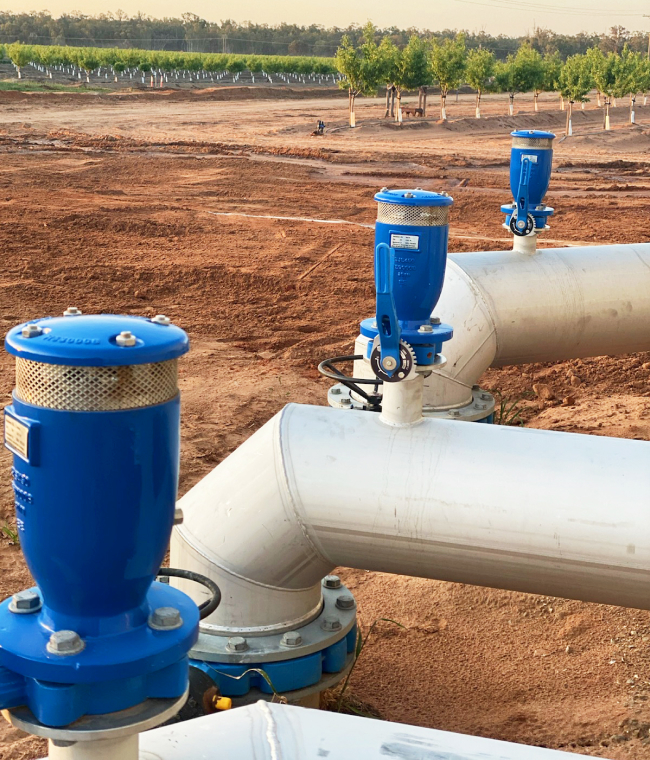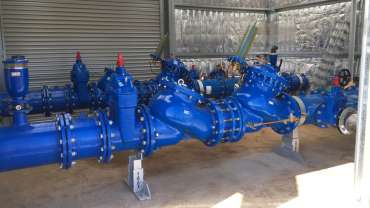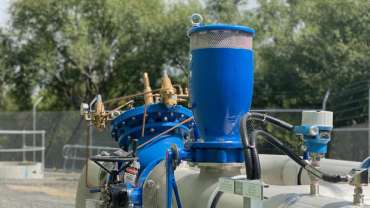FOX RFP air release valve in irrigation applications
![CSA Fox-RFP air valve_Header]()
This article will describe how to properly service and maintain the CSA FOX RFP air release valve in irrigation applications
Understanding the need for an air release valve
Air release valves play an integral role in water transfer by ensuring that the pipe is charged with water and that all air is evacuated efficiently.
In order for CSA air valves to remain in good condition, it’s critical that the valves are not isolated from the pipeline, so that valve performance is not impacted.
Over time, any object or large particles floating in the water pipeline can enter the air release valve, leaving the valve prone to leakage.

The CSA Fox RFP air release valve in application.
The CSA Fox-RFP air release valve
Prior to any isolation or operation of the air release valves, it’s important to understand the normal operation and mechanics of the valve.
In many instances during a pipe filling or a pump station startup, there can sometimes be a
small discharge of water until the float seals correctly. This is quite normal and should not be considered a fault
To understand this operation and how it works, watch the valve in action:
How to clean and service the Fox-RFP air release valve
To ensure the FOX-RFP air release valve is maintained in good condition, we recommend a regular servicing and clean using the following procedure:
- Isolate the air valve by closing the inlet ball/gate valve.
- If there is no isolation valve, then drain the pipeline down below the elevation of the air valve.
- De-pressurise the valve carefully by releasing the pressure from the drain valve on the lower side of the valve body. This is done with a flat head screwdriver.
- Remove the cover on the top of the valve body by removing the cover nuts.
- Remove the spacers on the body studs.
- Remove the nuts holding the stainless-steel seat to the valve body.
- Remove both the floats from the inside of the valve body.
- Remove the small inner float from the lower float to expose the automatic orifice.
- Clean any debris that may be in the stainless-steel automatic orifice.
- Reassemble the floats together and re-assemble the valve in the opposite way to the disassembly procedure.
- Slowly open the inlet isolation valve to be sure the valve is sealing correctly. The minimum pressure required is 1m.
Watch a step-by-step demonstration of Colin Kirkland performing the servicing of the CSA Fox RFP air valve:
Looking for additional support? We’re here to help.
Here at Bermad, we’re committed to providing the information you need for products, technology, and operating systems. That’s why we’re committed to ensuring that users of the CSA air-valves have the best information on the functions of all our products.
If you have any further questions or require the operation manual or datasheets, you can:
- Visit the Fox-RFP valve product page to find all relevant datasheets, engineering assistance, 2D &3D cad drawings, manuals, case studies, spare parts, and operational videos.
- Visit the Bermad training facility to get hands-on training on the pressure reducing valve.
- Contact your nearest sales office for discussions with the trained Bermad personnel.
- Use our live field support to assist in the operation of any valve.
Make enquiry
Online Enquiry Close

This article will describe how to properly service and maintain the CSA FOX RFP air release valve in irrigation applications
Understanding the need for an air release valve
Air release valves play an integral role in water transfer by ensuring that the pipe is charged with water and that all air is evacuated efficiently.
In order for CSA air valves to remain in good condition, it’s critical that the valves are not isolated from the pipeline, so that valve performance is not impacted.
Over time, any object or large particles floating in the water pipeline can enter the air release valve, leaving the valve prone to leakage.
The CSA Fox RFP air release valve in application.
The CSA Fox-RFP air release valve
Prior to any isolation or operation of the air release valves, it’s important to understand the normal operation and mechanics of the valve.
In many instances during a pipe filling or a pump station startup, there can sometimes be a
small discharge of water until the float seals correctly. This is quite normal and should not be considered a fault
To understand this operation and how it works, watch the valve in action:
How to clean and service the Fox-RFP air release valve
To ensure the FOX-RFP air release valve is maintained in good condition, we recommend a regular servicing and clean using the following procedure:
- Isolate the air valve by closing the inlet ball/gate valve.
- If there is no isolation valve, then drain the pipeline down below the elevation of the air valve.
- De-pressurise the valve carefully by releasing the pressure from the drain valve on the lower side of the valve body. This is done with a flat head screwdriver.
- Remove the cover on the top of the valve body by removing the cover nuts.
- Remove the spacers on the body studs.
- Remove the nuts holding the stainless-steel seat to the valve body.
- Remove both the floats from the inside of the valve body.
- Remove the small inner float from the lower float to expose the automatic orifice.
- Clean any debris that may be in the stainless-steel automatic orifice.
- Reassemble the floats together and re-assemble the valve in the opposite way to the disassembly procedure.
- Slowly open the inlet isolation valve to be sure the valve is sealing correctly. The minimum pressure required is 1m.
Watch a step-by-step demonstration of Colin Kirkland performing the servicing of the CSA Fox RFP air valve:
Looking for additional support? We’re here to help.
Here at Bermad, we’re committed to providing the information you need for products, technology, and operating systems. That’s why we’re committed to ensuring that users of the CSA air-valves have the best information on the functions of all our products.
If you have any further questions or require the operation manual or datasheets, you can:
- Visit the Fox-RFP valve product page to find all relevant datasheets, engineering assistance, 2D &3D cad drawings, manuals, case studies, spare parts, and operational videos.
- Visit the Bermad training facility to get hands-on training on the pressure reducing valve.
- Contact your nearest sales office for discussions with the trained Bermad personnel.
- Use our live field support to assist in the operation of any valve.




